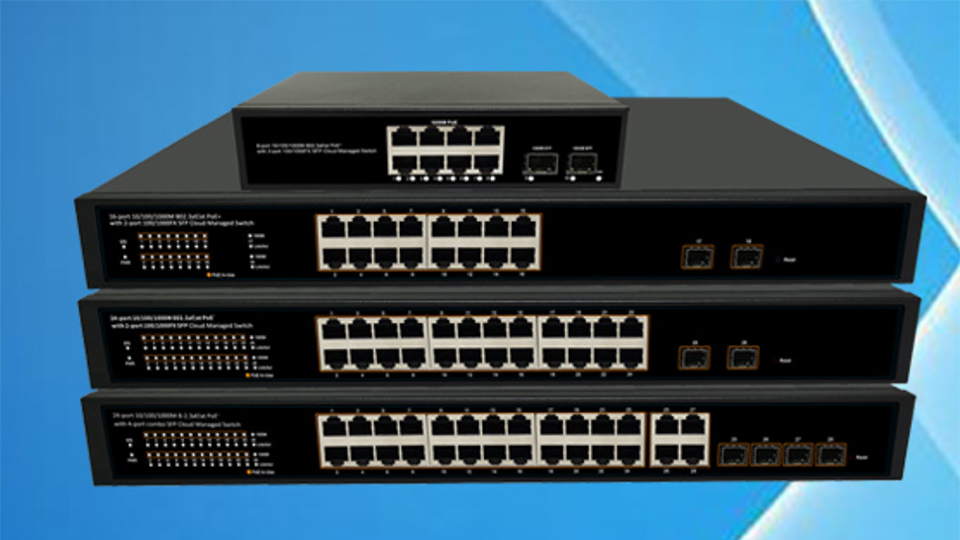Choosing a suitable POE (Power over Ethernet) switch requires considering multiple factors. Here are some key steps and points:

1. First, clarify the environmental and technical requirements of the application
Based on the equipment to be arranged in the application, make a good system plan, and determine the number of nodes based on the topology diagram, so as to determine the number of POE switches and switch ports to be used.
These nodes include computers, wireless access points (APs), IP cameras, IP phones, etc. This will directly affect the number of ports required for the POE switch.
Transmission distance: Understand the maximum distance between the device and the switch to determine the required POE power supply and network cable type. The power transmission range of the POE switch is usually limited to within 100 meters.
Power supply requirements: Clarify the power requirements of the device to select the appropriate POE switch power supply. POE switches support multiple standards, such as IEEE 802.3af (power supply power of 15.4W) and IEEE 802.3at (power supply power of 30W). Choose the appropriate standard according to the power of the device.
Network performance: Usually the network can choose 100M or 1000M. Understand the required network bandwidth, transmission rate and delay requirements to ensure that the corresponding POE switch selected can meet the network performance requirements.
In harsh environments, industrial-grade PoE switches should be selected. It can adapt to a wider temperature range.
2. Determine the port requirements of the PoE switch based on the number of nodes and the number of devices to be connected.
Number of ports: select the appropriate number of ports based on the number of devices, and consider possible future expansion needs. Common interface specifications on the market include 4 ports, 8 ports, 12 ports, 16 ports and 24 ports, etc. In addition, if there is a need for layout, you can consider products with higher speeds for cascade ports (Uplink).
Power supply: Ensure that the power supply of the selected POE switch can meet the power requirements of all access devices.
Network performance: select a switch model with appropriate network bandwidth, transmission rate and delay performance, such as: 100M, 1000M, to meet network application requirements. Fiber port: If necessary, fiber connection can be used. Fiber interface has the characteristics of high speed. Make sure that the selected POE switch has the appropriate number and speed of fiber ports (Slot).
Network management function: select appropriate network management functions according to network management needs, such as VLAN division, link aggregation, port mirroring, etc. Network management switches are usually divided into cloud management, port management and other modes. Choose according to needs.
3. Choose manufacturers and brands according to needs, budget, and long-term planning.
Brand selection: Choose POE switches from well-known brands and reliable merchants to ensure product quality and after-sales service. Domestic brands are not much different from foreign brands in terms of quality, and the price is relatively reasonable.
After-sales service: Consider purchasing a POE switch with a complete after-sales service system so that you can get repairs and support in time when problems arise.
Products with a three-year warranty are more secure.
4. Testing and maintenance
Testing: After the configuration is completed, perform network testing to ensure that the device can access the network and obtain power normally.
Maintenance: Regularly check the operating status of the equipment to ensure that the network is stable and reliable. If necessary, software upgrades or hardware replacements can be performed.
In summary, choosing a suitable POE switch requires comprehensive consideration of multiple factors, including the number of devices, transmission distance, power supply requirements, network performance, number of ports, power supply, fiber ports, network management functions, brand and after-sales, as well as testing and maintenance. By carefully comparing and evaluating different options, you can find the POE switch that best suits your needs.
